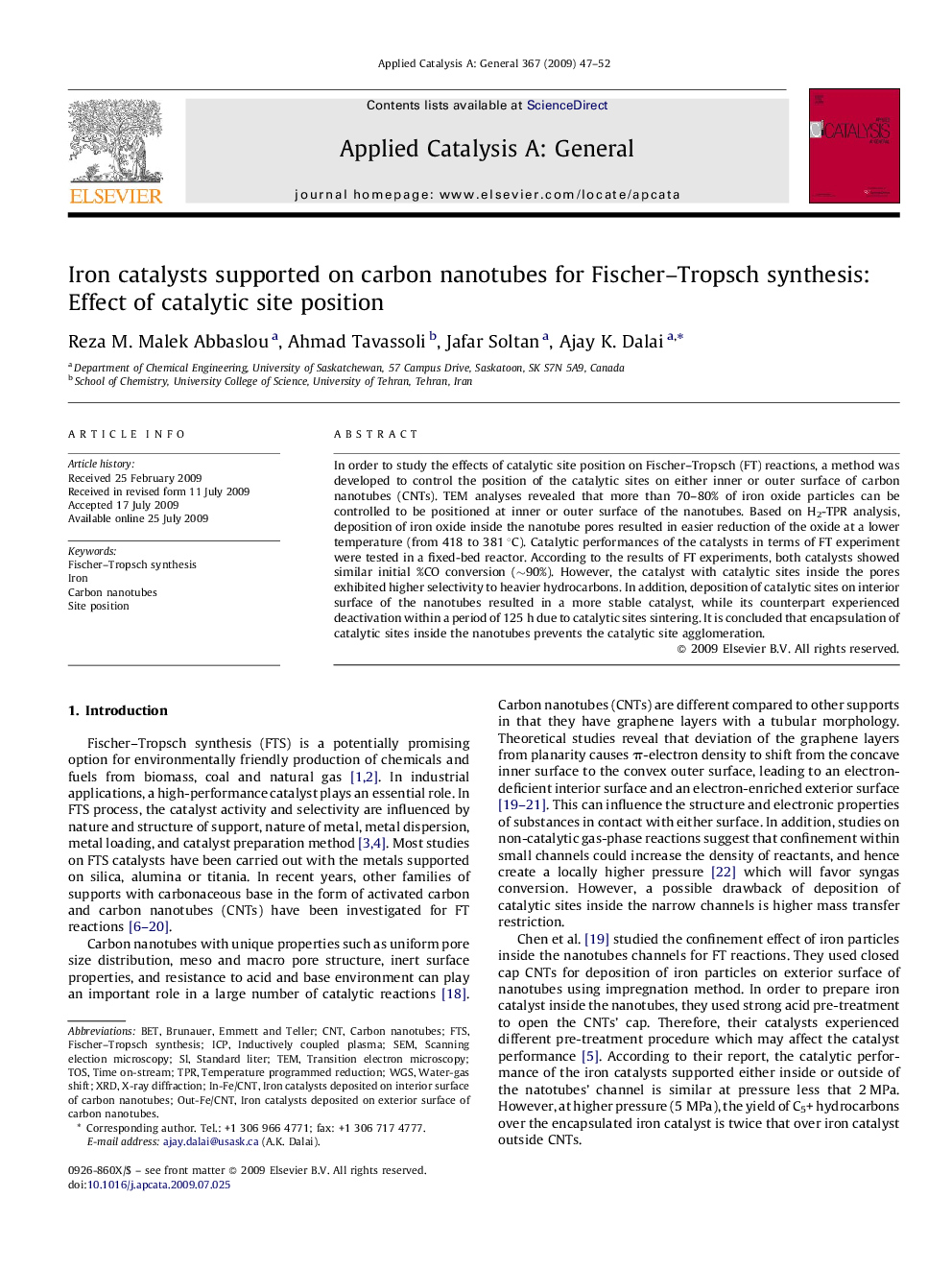| Article ID | Journal | Published Year | Pages | File Type |
|---|---|---|---|---|
| 42430 | Applied Catalysis A: General | 2009 | 6 Pages |
In order to study the effects of catalytic site position on Fischer–Tropsch (FT) reactions, a method was developed to control the position of the catalytic sites on either inner or outer surface of carbon nanotubes (CNTs). TEM analyses revealed that more than 70–80% of iron oxide particles can be controlled to be positioned at inner or outer surface of the nanotubes. Based on H2-TPR analysis, deposition of iron oxide inside the nanotube pores resulted in easier reduction of the oxide at a lower temperature (from 418 to 381 °C). Catalytic performances of the catalysts in terms of FT experiment were tested in a fixed-bed reactor. According to the results of FT experiments, both catalysts showed similar initial %CO conversion (∼90%). However, the catalyst with catalytic sites inside the pores exhibited higher selectivity to heavier hydrocarbons. In addition, deposition of catalytic sites on interior surface of the nanotubes resulted in a more stable catalyst, while its counterpart experienced deactivation within a period of 125 h due to catalytic sites sintering. It is concluded that encapsulation of catalytic sites inside the nanotubes prevents the catalytic site agglomeration.
Graphical abstractThe effects of electronic properties of inner and outer surface of carbon nanotubes (CNTs) on Fischer–Tropsch (FT) reactions were studied. According to the results of FT experiments, the catalyst with iron particles inside the pores exhibited higher selectivity to heavier hydrocarbons. Deposition of iron site on interior surface of nanotubes resulted in a stable catalyst, while its counterpart experienced deactivation due to metal sintering.Figure optionsDownload full-size imageDownload as PowerPoint slide
